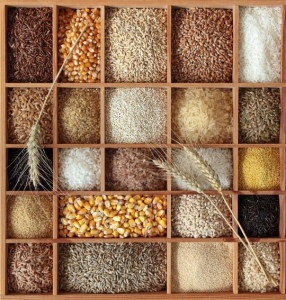 Carbs vs Whole Grains. What’s the difference? Carb confusion is ongoing and we’re often asked about what are the best carbs for health. Whole grains are healthy carbohydrates (carbs) and a terrific choice but many people struggle to find or cook with whole grain foods.
Carbs vs Whole Grains. What’s the difference? Carb confusion is ongoing and we’re often asked about what are the best carbs for health. Whole grains are healthy carbohydrates (carbs) and a terrific choice but many people struggle to find or cook with whole grain foods.
Carbohydrates are the body’s main source of fuel, and the benefits of whole grain carbs go beyond energy to include nutrients such as B vitamins, vitamin E, magnesium, iron and fibre, as well as phytochemicals and antioxidants. Research shows that whole grains lower the risk of heart disease, stroke, cancer, diabetes and obesity.
Whole grain refers to the seed of a plant that has all 3 edible parts – the bran, the germ, and the endosperm. You’ve heard that going for whole grains is good for you and Health Canada recommends making at least half your grain choices whole grains.
Here are 5 ways to get more whole grains in your day:
- When shopping for food, look for the word ‘whole grain’ on the ingredient list. Best bets are foods where whole grain is the main ingredient and appears as first on the ingredient list.
- Don’t be fooled by ‘multigrain’ claims because these simply mean more than one grain is in the food. Check the ingredient list to be sure that you’re getting a whole grain.
- In Canada, whole wheat flour may have much of the germ removed. Therefore ‘100% whole wheat’ doesn’t mean it’s also whole grain. Check the ingredient list for the words ‘whole grain whole wheat’.
- When cooking or eating out, try different kinds of whole grains for variety of taste and texture. What better way to boost health than switching up your whole grain picks.
- Here are some the of whole grains chefs and consumers are trying, and we encourage you to test some of these terrific carbs too: amaranth, barley, bulgur, brown rice, buckwheat, farro, freekah, kamut, millet, oatmeal, quinoa, sorghum, spelt, teff, and triticale.
Bon Appétit!